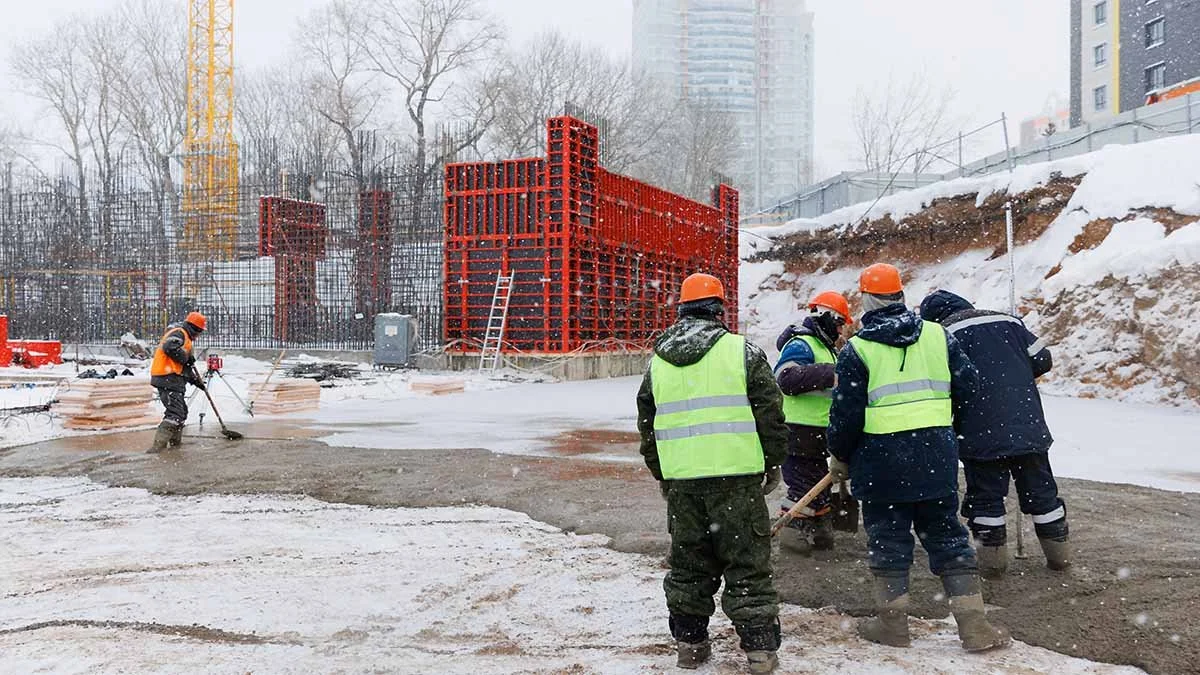Preventing Slips, Trips and Falls on Construction Sites During Winter
As winter sets in, construction sites face a rise in slip, trip and fall hazards. Shorter daylight hours, wet weather, damp surfaces and seasonal debris all increase the risk of accidents, especially during early starts and late finishes when visibility is poor. With slips, trips and falls remaining one of the most common causes of workplace injuries in construction, winter is the time to step up your site safety approach.
Here’s what to look out for and how to keep your workforce safe.
1. Wet Leaves: More Dangerous Than They Look
During autumn and early winter, fallen leaves create slippery surfaces that can hide uneven ground, potholes or loose materials.
Prevention Tips:
Clear leaves from walkways, access routes and site entrances daily.
Use grit or anti-slip matting in high-traffic areas.
Avoid allowing vehicles to drag leaves across the site, where they mix with mud and become even more hazardous.
2. Damp and Wet Floors: Constant Winter Threats
Rain, frost and mud are easily transferred onto floors in cabins, welfare areas and indoor workspaces, creating hidden slip hazards.
Prevention Tips:
Place absorbent mats at all entry points.
Implement a regular floor-cleaning schedule, especially during peak footfall times.
Remind workers to immediately report or clean spills and wet patches.
Use temporary barriers and signage to warn of wet floors.
3. Darker Mornings and Evenings: Reduced Visibility Increases Risk
Short days mean more work is carried out in low light. Hazards that would normally be spotted are easily missed, especially trip hazards such as tools, cables and uneven surfaces.
Prevention Tips:
Ensure adequate lighting along walkways, staircases, work zones and vehicle routes.
Use motion-sensor or timed lighting in temporary structures and storage areas.
Require workers to wear high-visibility PPE at all times.
Keep access routes tidy, well-defined and free from trailing cables and stored materials.
4. Mud, Ice and Frost: Seasonal Ground Hazards
Even a thin layer of frost can be enough to cause a slip, and muddy conditions around excavation areas make walking surfaces unstable.
Prevention Tips:
Grit paths early in the morning before workers arrive.
Use duckboards or temporary walkway systems over muddy ground.
Regularly inspect high-risk zones like site entrances, scaffolding access points and loading areas.
Consider temporary handrails or barriers in exposed locations.
5. Good Housekeeping: The Most Effective Prevention Tool
Many slips and trips come down to basic site organisation. In winter, good housekeeping needs even more attention.
Key Actions:
Keep walkways clear and well-defined.
Remove waste materials quickly.
Ensure tools and equipment are stored safely.
Brief workers daily on site conditions that may have changed overnight.
6. Worker Awareness: Training and Briefings Matter
Even the best control measures only work when everyone on site understands the risks. Winter is the ideal time to refresh safety training and carry out toolbox talks focused on seasonal hazards.
Reinforce:
Safe walking practices
How to identify slip/trip hazards
The importance of reporting unsafe conditions
Proper use of lighting and PPE
Winter brings a combination of factors, wet leaves, damp floors, low light and icy conditions, that significantly raise the risk of slips, trips and falls on construction sites. By improving housekeeping, increasing lighting, managing ground conditions and raising worker awareness, you can keep your team safe and your site running smoothly throughout the season.


